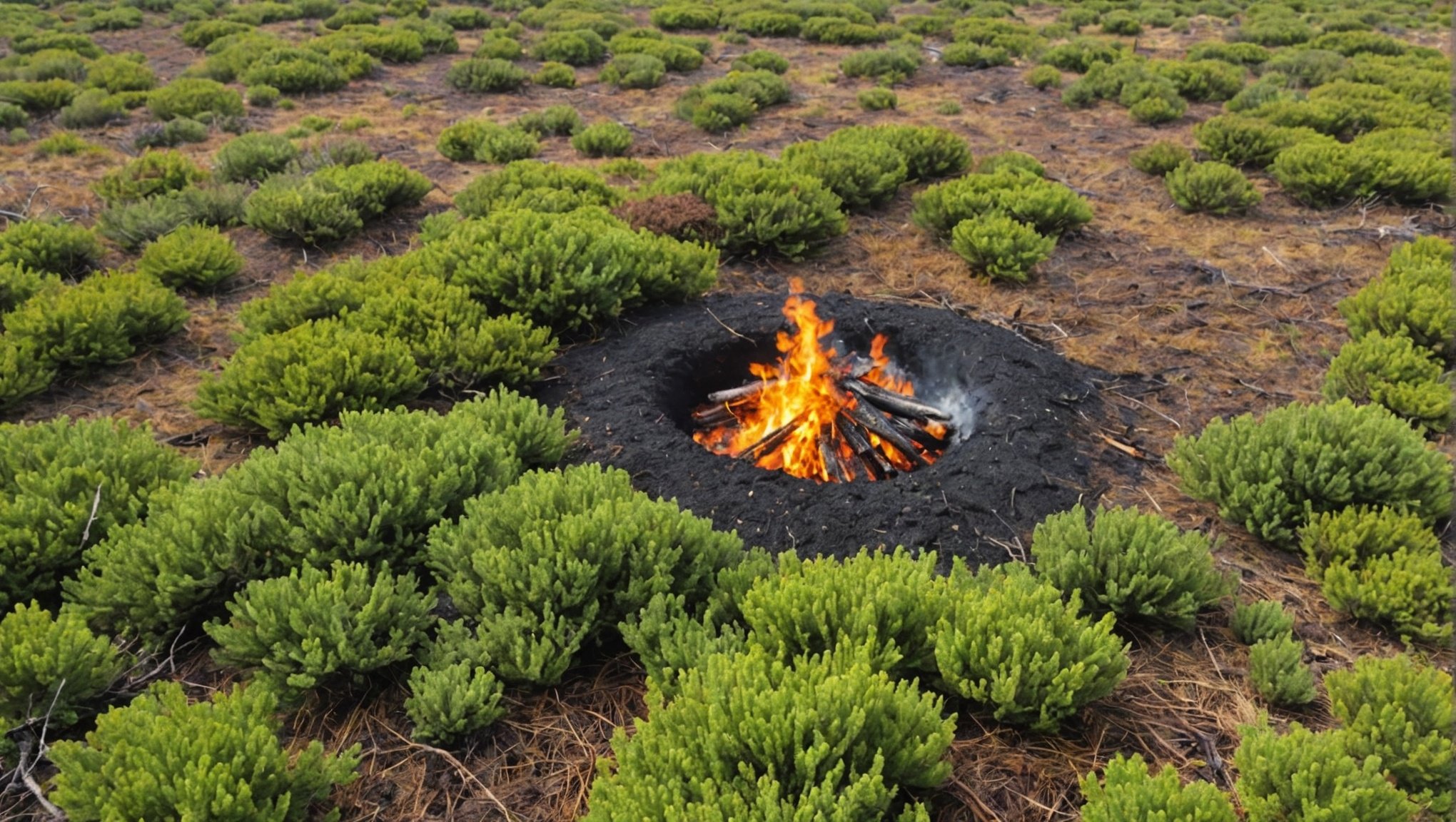Overview of Ground-Nesting Birds in UK Heathlands
The heathland ecosystem plays a vital role in supporting ground-nesting birds, which are essential to maintaining UK biodiversity. Ground-nesting birds contribute significantly to ecological diversity, serving unique roles within the food web. Their presence indicates a healthy ecosystem, as they often help control insect populations and disperse seeds.
Challenges in Heathlands
Ground-nesting birds face considerable challenges in heathland environments. Human activities, such as urban development, agricultural expansion, and recreational use, threaten these habitats. Predation from both natural predators and domestic animals adds to their vulnerabilities. Additionally, climate change is altering habitat conditions, impacting breeding patterns and food availability.
A lire également : Impact of UK Water Quality Regulations on Amphibian Breeding Habitats: An In-Depth Analysis
Heathlands themselves are crucial yet sensitive environments. These open landscapes, characterized by low-growing shrubs, provide specific conditions needed for the nesting and survival of these birds. Maintaining a balance between human use and conservation efforts is essential to protect this ecosystem and, consequently, the ground-nesting birds that depend on it.
Significance of Heathland Ecosystems
Understanding the significance of heathlands is critical for their preservation. These areas are not only home to ground-nesting birds but also support a wide array of plant and animal species, some of which are rare and endangered. Conservation of heathlands involves safeguarding these unique species and ensuring the ecological functions they perform continue to benefit broader biodiversity.
A lire aussi : Exploring the UK”s Efforts to Assess Air Pollution”s Impact on Avian Habitats in Industrial Areas
Understanding Controlled Burns
Controlled burns, also known as prescribed fires, are a key practice in ecological management. They are intentionally set and managed to achieve specific ecological and resource management objectives. The primary purpose of controlled burns is to reduce hazardous fuel loads, thereby preventing larger wildfires, and to promote the health of certain ecosystems that are adapted to or even dependent on periodic fires.
Historically, the UK has utilised controlled burns in land management, particularly on heathlands. Traditional uses include maintaining open landscapes for grazing and biodiversity enhancement. Over centuries, controlled fire has been a tool for agricultural and ecological purposes, helping maintain the unique ecological balance of these areas.
Fire ecology is the study of how fire interacts with ecosystems. In heathland environments, fire plays a crucial role. Many native plant species have adapted to regular burning, which can rejuvenate growth and habitats. The nutrient cycling post-burn enriches the soil, fostering conditions for diverse flora and fauna. Such processes underscore the significance of controlled burns in sustaining healthy ecosystems.
By understanding fire ecology, land managers can effectively apply controlled burns, ensuring that heathland ecosystems maintain their ecological integrity. This practice, therefore, not only aids in protecting the environment but also contributes to cultural and ecological continuity.
Ecological Benefits of Controlled Burns for Ground-Nesting Birds
Controlled burns, while seemingly destructive, provide significant ecological benefits for ground-nesting birds and broader ecosystem vitality. By fostering habitat restoration, these burns enhance habitat structure and diversity. This process aids the conservation of ground-nesting birds, who rely on open and varied land surfaces for nesting and foraging. The reduced vegetation density post-burns creates an ideal environment for these birds, promoting more successful mating and nesting.
Moreover, controlled burns are instrumental in managing pests and predators. Without excessive undergrowth, areas become less hospitable to pests that could harm bird populations. Similarly, clearing dense vegetation limits hiding spots for predators, offering a safer haven for nesting birds. This predator management is crucial in allowing bird populations to thrive.
Evidence increasingly supports the role of controlled burns in improving the reproductive success of ground-nesting birds. Studies have noted higher egg survival rates and fledgling success in post-burn environments, directly correlating to better conservation outcomes. The improved visibility and accessibility of scorched landscapes reduce the risk of nests being disturbed or preyed upon, further safeguarding these critical wildlife communities.
Controlled burns, thus, are not merely a land management tool but a comprehensive strategy integral to preserving the intricate balance of our ecosystems.
Case Studies of Successful Controlled Burn Initiatives
Exploring conservation case studies provides insights into the practical applications of controlled burns. These examples highlight successful practices and the substantial controlled burn results.
Case Study 1: [Specific Location/Initiative]
In this initiative, controlled burns were utilized with specific goals such as restoring habitat diversity and supporting ground-nesting bird populations. The process included careful planning, execution under monitored conditions, and observation of ecological responses. Positive outcomes included increased nesting sites and better forage accessibility for birds. Key lessons learned emphasized the importance of timing the burns to coincide with lifecycle events of target species—this approach maximises positive impacts while minimising risks to wildlife.
Case Study 2: [Specific Location/Initiative]
The second project involved intensive community involvement and targeted efforts to rejuvenate local biodiversity. Volunteers worked alongside professionals, learning valuable skills in controlled burn management. This hands-on participation strengthened community ties and educated locals on ecosystem health. Post-burn assessments revealed significant improvements in habitat recovery, with diverse flora and fauna returning to the area. Recommendations from this study suggest ongoing maintenance burns and community education programs to sustain ecological benefits.
Both cases illustrate how structured controlled burn initiatives can enhance biodiversity and promote ecological resilience, fostering environments where species can thrive.
Guidelines for Implementing Controlled Burns
Implementing controlled burns, also known as prescribed fires, necessitates meticulous planning and adherence to best practices. The first critical step is developing a well-structured burn plan, which outlines the objectives, desired outcomes, and specific procedures for conducting the burn. This plan serves as the foundation for effective risk management and ensures that all necessary precautions are taken.
When planning a controlled burn, several key factors must be considered:
- Timing: Selecting the optimal time of year is crucial. This involves evaluating seasonal weather patterns to choose periods when conditions, such as temperature and humidity, align favourably with the burn’s goals.
- Weather and Environmental Conditions: Weather plays a pivotal role in determining the success of a controlled burn. Identifying windows of stable weather conditions reduces unpredictable risks. Environmental factors, including wind speed and direction, must also be assessed to prevent uncontrollable spread.
- Community Engagement and Education: Engaging with the local community is essential in fostering understanding and support for controlled burns. Informative sessions can educate residents about the benefits of these burns in terms of conservation and ecosystem health, thereby reducing potential concerns.
By following best practices in burn planning and addressing both environmental and social dimensions, controlled burns can be executed safely and effectively.
Challenges and Considerations in Controlled Burn Practices
When it comes to fire management through controlled burns, understanding the ecological risks is crucial. One of the main challenges is the potential for runs to escalate beyond intended boundaries, posing dangers to both the environment and nearby communities. Mitigating these risks involves developing meticulous plans and strategies, ensuring weather conditions are thoroughly analysed, and employing trained personnel.
Public perception can influence the implementation of controlled burns. Many communities express concerns over air quality, potential damage to wildlife habitats, and threats to human safety. Therefore, transparent communication about the benefits and safety measures is necessary to alleviate these fears.
Legal and regulatory considerations add another layer of complexity. Authorities must adhere to strict guidelines before conducting a burn. This includes obtaining the necessary permits and ensuring compliance with environmental regulations to protect against ecological risks. Fire management plans often involve consultations with environmental experts to minimise negative impacts on the ecosystem.
Understanding these challenges and employing comprehensive strategies ensures that controlled burns are both effective and safe, addressing public concerns and legal obligations while maintaining the delicate balance of our ecosystems.
Policy Implications and Community Involvement
Conservation policies play a vital role in the management of controlled burns, providing a framework for ensuring environmental balance. These policies are designed to protect ecosystems while permitting necessary practices that reduce fire hazards. Key components of environmental legislation focus on maintaining the integrity of heathlands, which require periodic burns to benefit biodiversity and reduce the risk of uncontrolled wildfires.
Engaging local communities is crucial for the success of conservation efforts. Community participation not only enriches these initiatives through diverse input but also fosters a sense of ownership and responsibility among residents. Awareness programs and participatory workshops can empower locals to actively contribute, ensuring that their concerns and traditional knowledge are integrated into sustainable management practices.
Strategies to foster stakeholder collaboration are essential. This can be achieved by creating platforms for dialogue that include landowners, environmental groups, and policy-makers. These interactions help align goals and encourage cooperation in the complex landscape of heathland management. By highlighting the mutual benefits of conservation efforts, such as enhanced biodiversity and reduced fire risks, communities are more likely to support and engage with these initiatives, resulting in more effective and cohesive environmental stewardship.











